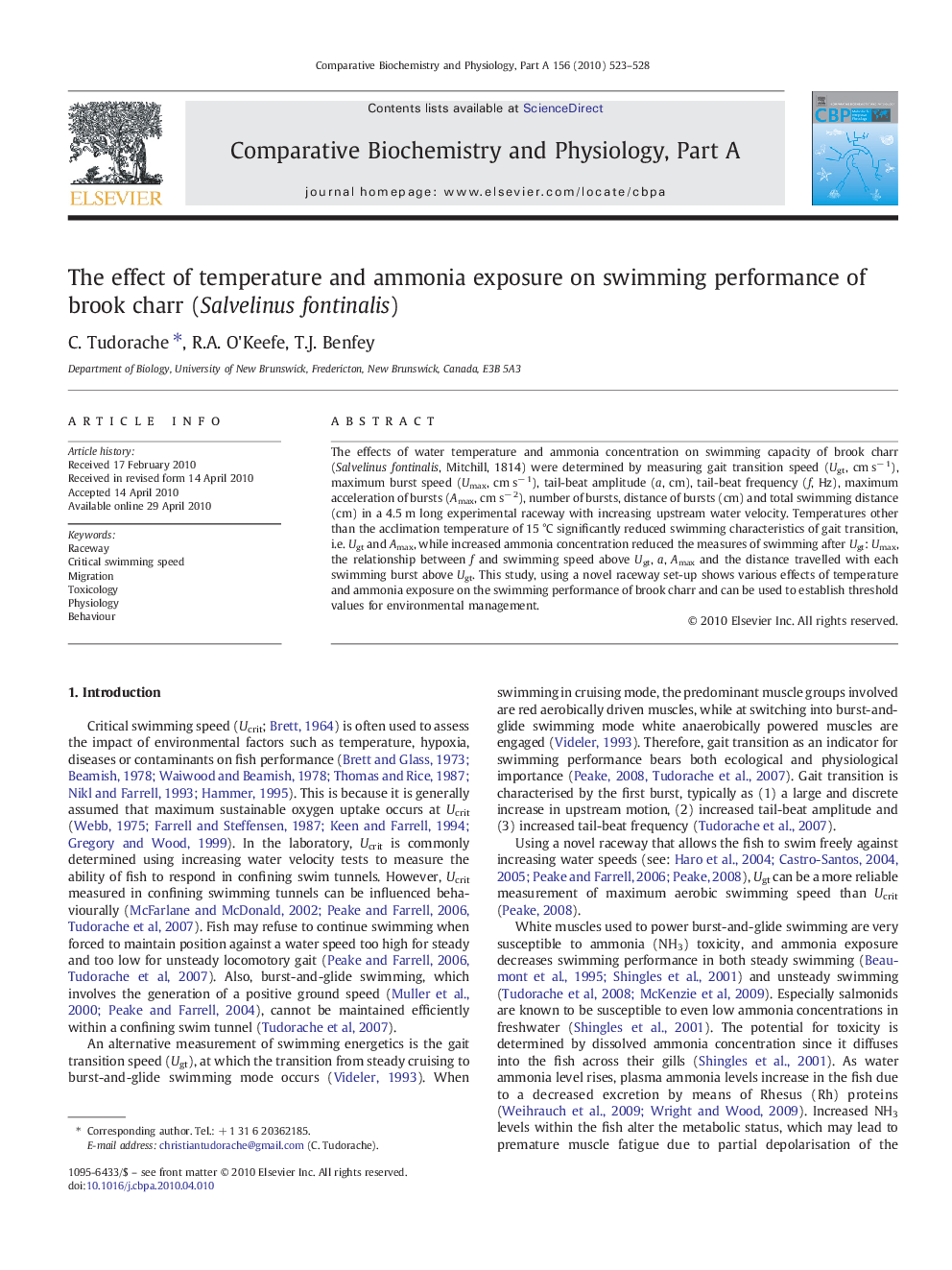| Article ID | Journal | Published Year | Pages | File Type |
|---|---|---|---|---|
| 1972971 | Comparative Biochemistry and Physiology Part A: Molecular & Integrative Physiology | 2010 | 6 Pages |
The effects of water temperature and ammonia concentration on swimming capacity of brook charr (Salvelinus fontinalis, Mitchill, 1814) were determined by measuring gait transition speed (Ugt, cm s− 1), maximum burst speed (Umax, cm s− 1), tail-beat amplitude (a, cm), tail-beat frequency (f, Hz), maximum acceleration of bursts (Amax, cm s− 2), number of bursts, distance of bursts (cm) and total swimming distance (cm) in a 4.5 m long experimental raceway with increasing upstream water velocity. Temperatures other than the acclimation temperature of 15 °C significantly reduced swimming characteristics of gait transition, i.e. Ugt and Amax, while increased ammonia concentration reduced the measures of swimming after Ugt: Umax, the relationship between f and swimming speed above Ugt, a, Amax and the distance travelled with each swimming burst above Ugt. This study, using a novel raceway set-up shows various effects of temperature and ammonia exposure on the swimming performance of brook charr and can be used to establish threshold values for environmental management.
